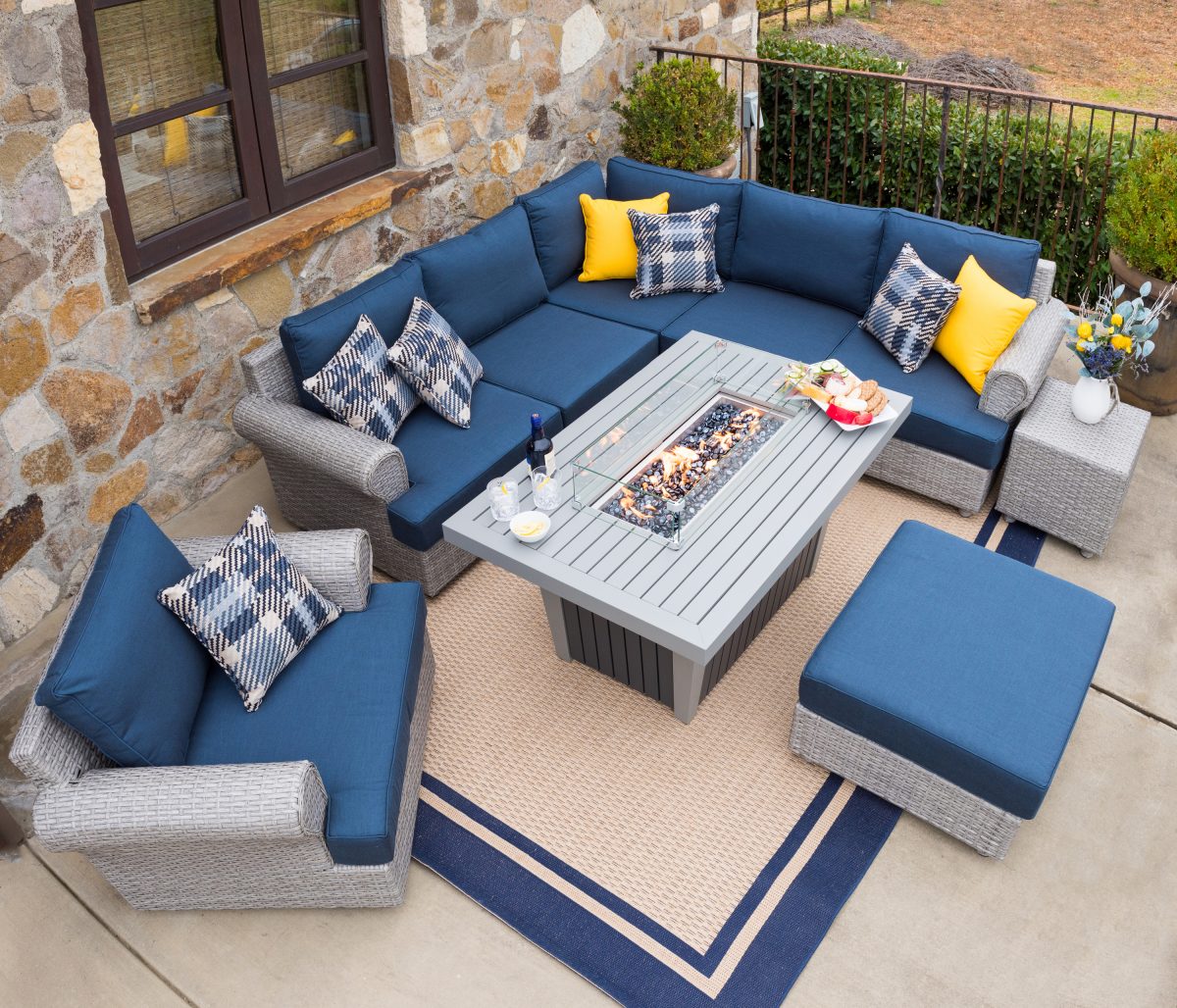Trying to find the perfect arrangement for your patio furniture can be challenging. Spending time moving the furniture around in search of the ideal layout is not only time-consuming but also takes a lot of energy. Fortunately, there are some simple furniture arranging tips that you can use to make the most of your space.
Start by reading through these tips. Then, sit down with a piece of paper and sketch out your patio layout. Coming up with a vision for the space ahead of time dramatically simplifies the process. Your goal during this early planning phase isn't to achieve perfection. Instead, it is just to get a rough idea of where the furniture should be placed. If you need help laying out your space, feel free to add a comment below this article. For now, however, let's take a closer look at how to go about arranging patio furniture like a pro.
1. Choose A Focal Point For Your Outdoor Area
Adding a focal point to your patio provides a place for people to gather together. The focal point is really the centerpiece of your patio design, try sling chairs to bring a little interest to your patio area. All of the other elements in the space play a supporting role.
2. Decide How You Want To Use Your Patio
Think about the atmosphere you are trying to create. If you want a formal feeling for your patio, consider arranging the furniture symmetrically. For something a bit more casual, an asymmetrical approach is a better option.
3. Think About How Traffic Will Move Through The Space
The way the furniture is laid out affects how people move through the space. As you are coming up with a design, try to picture how people will navigate around it. Make sure there are clear paths through the space. Keep an eye out for any areas that could become congested. Ideally, you should leave between three and four feet of space in high-traffic areas so that people have plenty of room to maneuver. In spaces that don't get as much foot traffic, you can reduce that distance to two feet.
A Tip from The Pros: Set up your furniture arrangement so that people can walk behind the furniture instead of right through the middle of the seating area. That way, they are less likely to disrupt the conversation if they need to get up for something.
4. Placing The Furniture
The furniture piece that is the longest should be placed across from the focal point. This helps create balance and keeps bulkier furniture pieces from drawing too much attention. Depending on the furniture set, the longest piece is usually either a loveseat or a sofa with three seats. Add chairs to the area, as well, to provide a place for guests to converse with one another.
5. Add Traditional Furniture Pieces To Your Outdoor Space
You can bring the comfort and style of your indoor space into your outdoor area as well through the use of furniture pieces like ottomans and side tables. Not only do these pieces provide a convenient place to set your drinks but they also can help make your space more comfortable. Relaxing outdoors with your feet up on an ottoman is not only comfortable but it can even help ease pain in your back.
6. Provide Separation Between Your Seating Area And Your Outdoor Kitchen
Ideally, the seating area and the outdoor kitchen should be separate from one another. From a safety standpoint, this helps keep children away from the hot grill. It also helps keep the two spaces from blending with one another. When choosing a location for your outdoor kitchen, consider opting for a spot that is close to your door. This will make it easier to prepare the food.
7. Consider Breaking The Space Down Into Multiple Areas
If you have a large outdoor space, try breaking it down into smaller individual sections. This helps create intimate areas where people can gather with each other or where they can relax and enjoy the outdoors. To make your space more inviting, invest in comfortable chairs, a patio heater, and possibly even an outdoor fireplace.
8. Add Accessories
Accessories like throw rugs, pillows, potted plants, and outdoor lights can all transform the space, making it much more comfortable and inviting. Another thing to consider when putting together your patio is where you are going to store your cushions when they aren't being used. Tucking the cushions away in a deck box is a great way to protect them from the weather, helping them last a lot longer.
Final Thoughts
One of the great things about patio furniture is that it is easy to move around. If you follow all of these tips and still don't feel like you got it right, you can try again until you come up with a layout that you love. If you get bored with your current arrangement, you can also mix things up by moving the furniture pieces around. You may even want to consider changing your outdoor space each time the seasons change. Sometimes, the simple act of moving your furniture can make it feel like new again.
